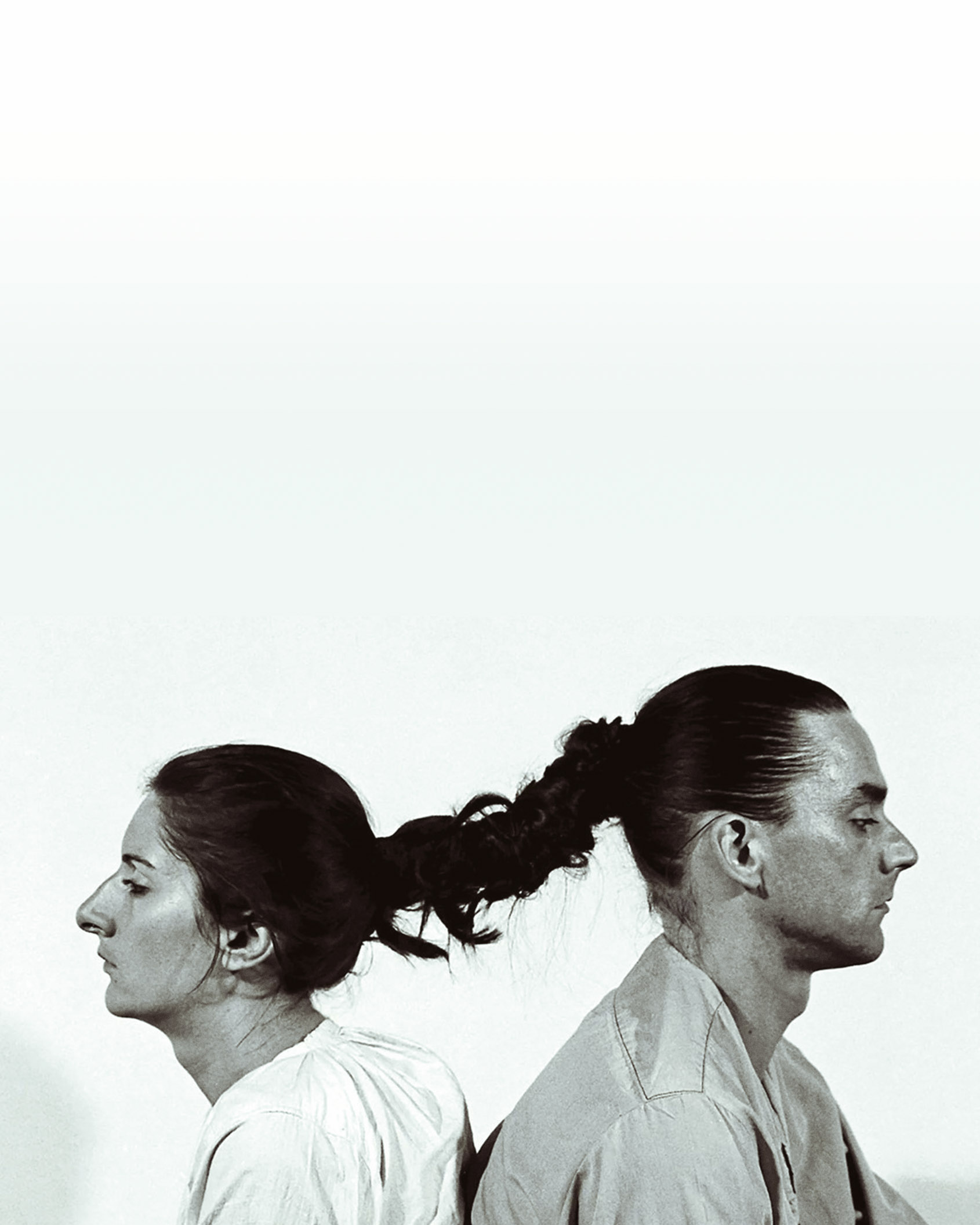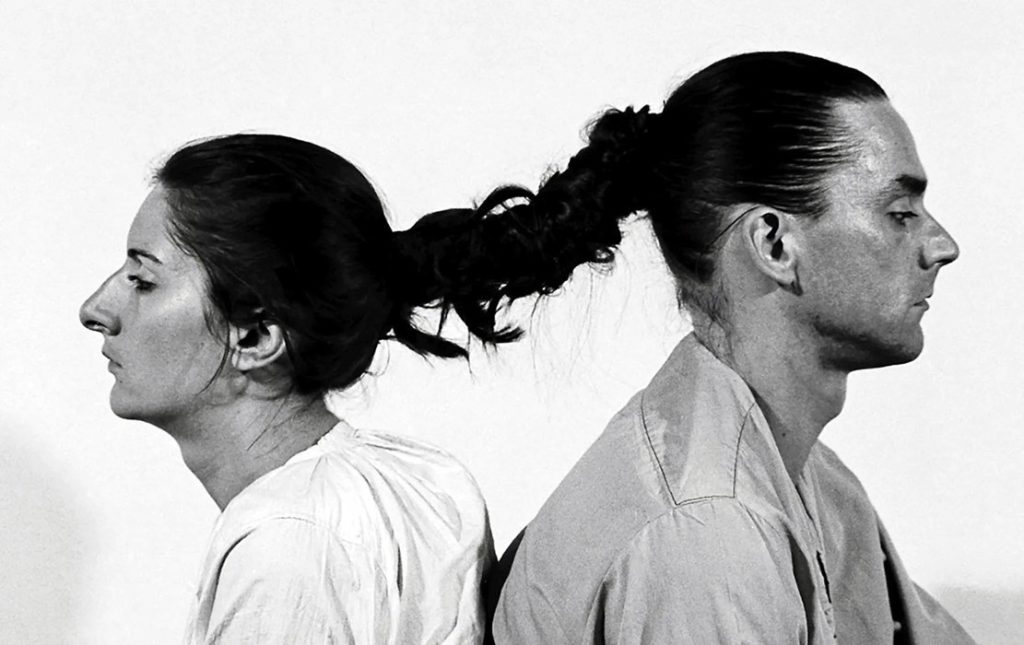
22 Apr Marina Abramović: An Exploration of Hair
Marina Abramović, a world-renowned performance artist, uses her body as both subject and medium of her artworks. Throughout her extensive body of work, hair has played a pivotal role, becoming an avenue for her to explore themes such as identity, duality, and connection.
One of the most potent examples of Abramović’s engagement with hair as a tool of expression is her collaborative work with Ulay, a German artist with whom she had a longstanding personal and professional relationship. In their performance piece titled “Relation in Time” (1977), the duo sit back-to-back, their hair interwoven, creating a physical and symbolic connection. This profound performance piece was intended to last for 17 hours and explored the concept of dual identity, the symbiosis between two individuals, and the tension that such an intimate connection can produce.
Hair, in this context, is not only a physical connector but also a metaphorical one. It stands as a symbol of the personal bond between the artists, embodying the idea that their identities are intertwined, connected, and dependent on each other. The act of tying their hair together creates a powerful image of unity, shared experience, and reciprocal vulnerability.
This work carries significant weight in understanding Abramović’s approach to the body and hair. As in many of her other performances, Abramović explores the body’s limits, its potential for communication, and its capacity for experiencing and expressing emotional and psychological states. Hair, in this case, becomes an extension of the body, a physical manifestation of the internal, emotional, and psychological ties that bind Abramović and Ulay together.
Moreover, Abramović’s use of hair in “Relation in Time” also underscores her interest in the passage of time, endurance, and the ephemeral nature of existence. Through this static, prolonged performance, hair becomes a silent witness to time, symbolizing the passage of moments and the accumulation of shared experiences.
Overall, in the context of Marina Abramović’s work, hair ceases to be a mere part of the body; it transforms into a versatile medium that carries symbolic, emotional, and philosophical weight. By incorporating hair in her performances, Abramović compels us to rethink its everyday significance and consider its potential as a profound tool of artistic and self-expression.

One of the most compelling examples of Abramović’s work with hair is the 1977 performance piece with Ulay titled “Relation in Time”. In this performance, the duo sat back-to-back, their hair interwoven, for 17 hours. The shared hair symbolised their interconnectedness and mutual dependence, while the duration of the performance tested their endurance and commitment (Abramović & Ulay, 1977).
Hair in this context became a physical and symbolic bond that highlighted their joint identity, signifying a shared consciousness and artistic vision. Yet, it also pointed towards constraints and the strain that such intense, inextricable relationships might incur.
Hair, for Abramović, is an extension of selfhood and identity. As evidenced in the aforementioned “Relation in Time” (Abramović & Ulay, 1977), hair becomes a medium that physically and metaphorically intertwines two identities into one. It is a potent symbol of unity, binding two individuals into a shared existence and narrative.
Hair in Abramović’s work also carries connotations of femininity. Being a female artist, she is acutely aware of the societal expectations, norms, and standards that are often attached to a woman’s hair. By using hair as an element in her performances, Abramović challenges these norms and provokes audiences to reassess their perceptions and assumptions related to femininity and its representation in society.
This sense of rebellion is central to Abramović’s use of hair. She often subverts traditional ideas associated with hair, simultaneously deconstructing and reconstructing its symbolic value. Through this, Abramović brings to the fore the complex ways in which hair, as an object of beauty and desire, is entangled with power dynamics and cultural expectations.
Furthermore, hair in Abramović’s performances serves as a powerful symbol of cultural expression. It has the ability to reveal certain aspects of culture and society, transcending language and geographical boundaries. Through her performances, Abramović invites audiences to appreciate the cultural significance of hair and consider its role in shaping personal and social narratives.
In conclusion, hair in Marina Abramović’s work is much more than a physical attribute. It is a potent symbol and a versatile tool of expression, revealing the complex interplay between identity, femininity, rebellion, and culture. Through her innovative use of hair, Abramović invites us to engage in a profound dialogue about the human condition, societal norms, and the relationships that bind us.
Abramović, M. and Ulay. (1977). Relation in Time. Performed at Studio G7, Bologna, Italy.
Westcott, J. (2010). When Marina Abramović Dies: A Biography. The MIT Press.



No Comments